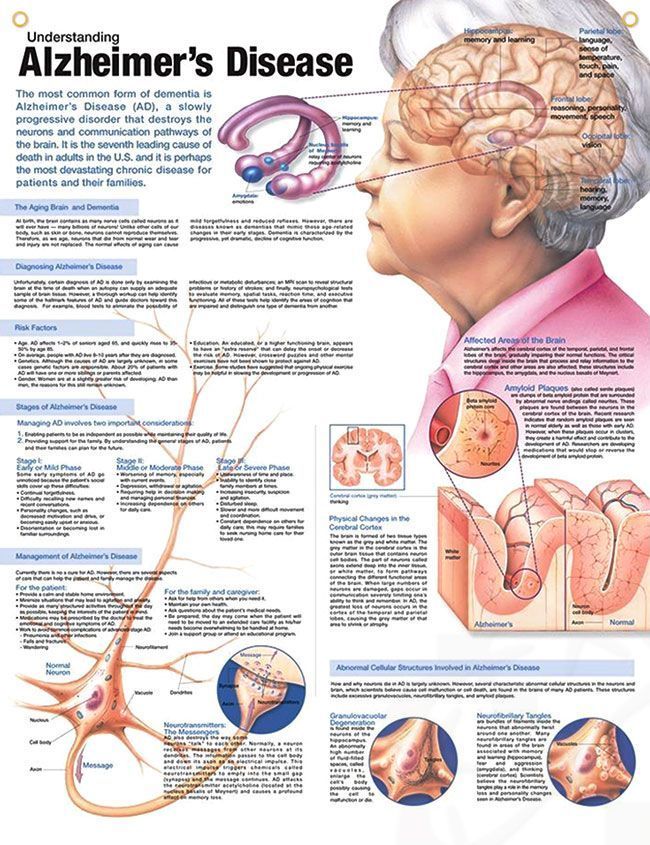What does it mean when you are craving chocolate
What Does It Mean When You’re Craving Chocolate?
Reasons for chocolate cravings
Food cravings are common. The tendency to crave foods high in sugar and fat is well-established in nutritional research. As a food high in both sugar and fat, chocolate is one of the most commonly craved foods in America.
Here are five reasons you might be craving chocolate and what you can do:
Chocolates are made by combining cocoa powder and cocoa butter with sweeteners and other ingredients. Cocoa butter accounts for most of the fat in chocolate. Different types of chocolate have varying concentrations of cocoa powder (often called the cacao percentage). Dark chocolate has the highest concentration of cocoa powder and white chocolate the lowest. Chocolate also contains a variety of other ingredients like sugars, milk powders, and nuts.
Cocoa is naturally bitter. To improve the taste of chocolate, processors add plenty of sugar. Sugar is a type of carbohydrate that your body absorbs quickly. Some people believe that this quick “sugar high” provides a temporary elevation in mood. Most research, however, suggests that it’s the combination of fat and sugar that make certain foods so addictive.
A plain Hershey’s milk chocolate bar has 24 grams of sugar. Other chocolate bars that contain caramel, nougat, and marshmallow may have even more sugar. For example, a Snickers bar has 27 grams of sugar. Chocolate bars containing more than 75 percent cacao tend to have less sugar (under 10 grams per bar).
Research suggests that sugars (and other refined carbohydrates) are a key component of processed foods that are considered addictive.
What to do about it
According to the American Heart Association, women should limit themselves to 25 grams of sugar per day (about six teaspoons) and men should stay below 36 grams (nine teaspoons). You may be able to reduce your sugar intake by eating chocolate with a high cacao percentage. If you’re concerned about the sugar content, you can also try this simple three-step plan to curb your sugar cravings.
Sometimes chocolate cravings can be easily explained: You’re just hungry. When your body is hungry, it craves fast carbohydrates like refined sugars. Unfortunately, most processed chocolate is high on the glycemic index, which means that it gives you a quick, but temporary sugar rush. Once that rush passes, you’ll likely be hungry again.
What to do about it
You can beat your chocolate craving by filling up on something else. Once you aren’t hungry anymore, the intrusive thoughts about chocolate should subside. Look for foods that are low in sugar and high in protein or whole grains. These foods will keep you full longer and prevent a sugar crash.
Share on Pinterest
While chocolate does contain some caffeine, it’s typically not very much. As cacao is processed, its caffeine content decreases. Most processed chocolate candy bars have under 10 mg of caffeine. To put that in perspective: The average cup of coffee has about 85 to 200 mg of caffeine.
Some dark chocolates, however, can contain more caffeine than a can of cola (which has around 30 mg). The higher the cacao content, the higher the caffeine content.
The higher the cacao content, the higher the caffeine content.
Caffeine stimulates the central nervous system, making you feel more awake and alert. It also affects the levels of certain neurotransmitters in your brain, including dopamine. This may contribute to its addictive nature. For people who never drink caffeinated beverages, the caffeine in chocolate may be enough to provide an energy boost. If you regularly consume caffeine, however, your tolerance to its effects is probably fairly high.
What to do about it
Try a cup of black tea for a caffeine boost rich in powerful antioxidants.
Read here for a comparison of caffeine counts in hot chocolate versus tea, soda, and coffee.
Share on Pinterest
About 50 percent of American women crave chocolate around the time their period starts. Researchers have been unable to find a biological explanation for this phenomenon. Among women born outside of the United States, in countries where chocolate isn’t habitually associated with PMS, chocolate cravings are far more unusual.
Basically, women may crave chocolate during their periods out of habit because they believe chocolate cravings are normal.
In addition, when you’re stressed, anxious, depressed, or uncomfortable, it’s easy to turn toward something that you know will make you feel good.
What to do about it
Practicing mindful eating will help you identify habitual cravings. Ask yourself why you want chocolate. Is it because you’re hungry? If not, you can find an alternative or simply eat it in moderation.
Mindfulness meditation and other stress relievers can also help you deal with stress in a healthier way.
Share on Pinterest
Research shows that chocolate is high in magnesium. Scientists have questioned whether magnesium deficiencies could explain people’s chocolate cravings. This seems unlikely given that there are other foods much higher in magnesium that people rarely crave, including nuts.
What to do about it
Magnesium supplements are available at your local pharmacy. You can also try eating foods high in magnesium, such as raw almonds, black beans, or whole grains.
You can also try eating foods high in magnesium, such as raw almonds, black beans, or whole grains.
The healthiest way to get your chocolate fix is to find a chocolate with a high cacao percentage. Chocolates with a high cacao percentage have more antioxidants and less sugar than other chocolates.
Look for chocolate that is ethically sourced through fair trade practices that protect the workers who produce it. Nearly 60 percent of the world’s cacao is currently grown in West African nations that tend to rely on child labor. Research funded by the U.S. Department of Labor found over 1.75 million children worked on cacao farms in Côte d’Ivoire and Ghana between 2008 and 2009.
Consumer guides and organizations like Ethical Consumer, from the United Kingdom, provide tools for people to learn more about the products they want. Ethical Consumer’s chocolate scorecard can help you find chocolates and chocolate companies that align with your values as a shopper.
The health benefits of chocolate come from the natural cocoa powder. Chocolate that contains at least 70 percent cacao may:
Chocolate that contains at least 70 percent cacao may:
- improve memory
- reduce inflammation
- lower your risk of cardiovascular disease
- boost your immune system
- reduce stress
- improve mood
- reduce your risk of diabetes
Trying to resist those chocolate cravings? Chocolate does have health benefits, but the high sugar and fat content can be detrimental for many people. Here are a few tips for cutting chocolate out of your life.
- Stay hydrated by drinking at least eight 8-ounce glasses of water per day.
- Fill up on healthy fats like olive oil, nuts, and avocados.
- Eat a well-balanced diet that incorporates lots of lean protein, fruits, vegetables, and whole grains.
- Eat organic nut butters with no added sugar.
- Satisfy your sweet tooth with organic fruits, low-fat yogurts, and fruit smoothies.
- Think outside the box when baking. Discover recipes that rely on whole grains instead of sugars to avoid a sugar crash.

Chocolate cravings are very common, but there are healthy ways to deal with them. Dark chocolate with high percentages of cacao have a number of health benefits, which means you should feel free to enjoy them (in limited quantities of course). Keep in mind that anything with sugar and fat can contribute to weight gain, so practice smart portion control.
What Does It Mean When You’re Craving Chocolate?
Reasons for chocolate cravings
Food cravings are common. The tendency to crave foods high in sugar and fat is well-established in nutritional research. As a food high in both sugar and fat, chocolate is one of the most commonly craved foods in America.
Here are five reasons you might be craving chocolate and what you can do:
Chocolates are made by combining cocoa powder and cocoa butter with sweeteners and other ingredients. Cocoa butter accounts for most of the fat in chocolate. Different types of chocolate have varying concentrations of cocoa powder (often called the cacao percentage). Dark chocolate has the highest concentration of cocoa powder and white chocolate the lowest. Chocolate also contains a variety of other ingredients like sugars, milk powders, and nuts.
Dark chocolate has the highest concentration of cocoa powder and white chocolate the lowest. Chocolate also contains a variety of other ingredients like sugars, milk powders, and nuts.
Cocoa is naturally bitter. To improve the taste of chocolate, processors add plenty of sugar. Sugar is a type of carbohydrate that your body absorbs quickly. Some people believe that this quick “sugar high” provides a temporary elevation in mood. Most research, however, suggests that it’s the combination of fat and sugar that make certain foods so addictive.
A plain Hershey’s milk chocolate bar has 24 grams of sugar. Other chocolate bars that contain caramel, nougat, and marshmallow may have even more sugar. For example, a Snickers bar has 27 grams of sugar. Chocolate bars containing more than 75 percent cacao tend to have less sugar (under 10 grams per bar).
Research suggests that sugars (and other refined carbohydrates) are a key component of processed foods that are considered addictive.
What to do about it
According to the American Heart Association, women should limit themselves to 25 grams of sugar per day (about six teaspoons) and men should stay below 36 grams (nine teaspoons). You may be able to reduce your sugar intake by eating chocolate with a high cacao percentage. If you’re concerned about the sugar content, you can also try this simple three-step plan to curb your sugar cravings.
Sometimes chocolate cravings can be easily explained: You’re just hungry. When your body is hungry, it craves fast carbohydrates like refined sugars. Unfortunately, most processed chocolate is high on the glycemic index, which means that it gives you a quick, but temporary sugar rush. Once that rush passes, you’ll likely be hungry again.
What to do about it
You can beat your chocolate craving by filling up on something else. Once you aren’t hungry anymore, the intrusive thoughts about chocolate should subside. Look for foods that are low in sugar and high in protein or whole grains.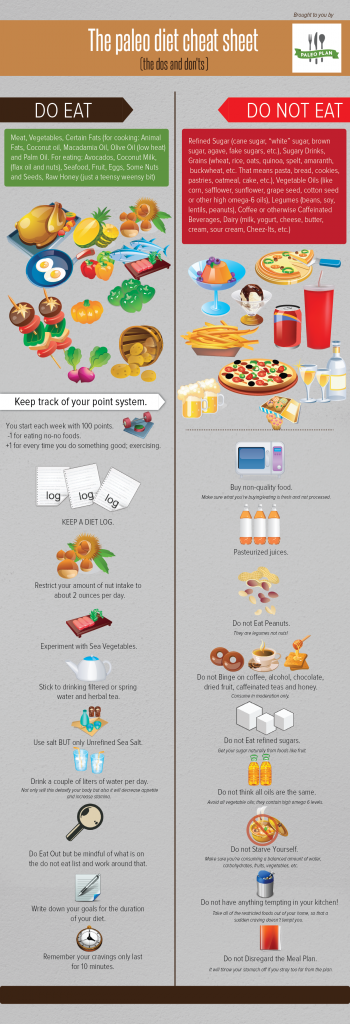 These foods will keep you full longer and prevent a sugar crash.
These foods will keep you full longer and prevent a sugar crash.
Share on Pinterest
While chocolate does contain some caffeine, it’s typically not very much. As cacao is processed, its caffeine content decreases. Most processed chocolate candy bars have under 10 mg of caffeine. To put that in perspective: The average cup of coffee has about 85 to 200 mg of caffeine.
Some dark chocolates, however, can contain more caffeine than a can of cola (which has around 30 mg). The higher the cacao content, the higher the caffeine content.
Caffeine stimulates the central nervous system, making you feel more awake and alert. It also affects the levels of certain neurotransmitters in your brain, including dopamine. This may contribute to its addictive nature. For people who never drink caffeinated beverages, the caffeine in chocolate may be enough to provide an energy boost. If you regularly consume caffeine, however, your tolerance to its effects is probably fairly high.
What to do about it
Try a cup of black tea for a caffeine boost rich in powerful antioxidants.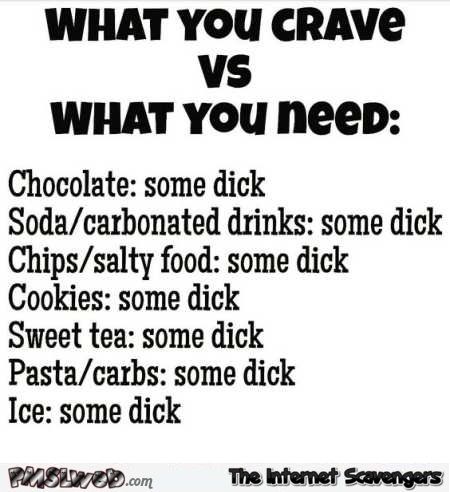
Read here for a comparison of caffeine counts in hot chocolate versus tea, soda, and coffee.
Share on Pinterest
About 50 percent of American women crave chocolate around the time their period starts. Researchers have been unable to find a biological explanation for this phenomenon. Among women born outside of the United States, in countries where chocolate isn’t habitually associated with PMS, chocolate cravings are far more unusual.
Basically, women may crave chocolate during their periods out of habit because they believe chocolate cravings are normal.
In addition, when you’re stressed, anxious, depressed, or uncomfortable, it’s easy to turn toward something that you know will make you feel good.
What to do about it
Practicing mindful eating will help you identify habitual cravings. Ask yourself why you want chocolate. Is it because you’re hungry? If not, you can find an alternative or simply eat it in moderation.
Mindfulness meditation and other stress relievers can also help you deal with stress in a healthier way.
Share on Pinterest
Research shows that chocolate is high in magnesium. Scientists have questioned whether magnesium deficiencies could explain people’s chocolate cravings. This seems unlikely given that there are other foods much higher in magnesium that people rarely crave, including nuts.
What to do about it
Magnesium supplements are available at your local pharmacy. You can also try eating foods high in magnesium, such as raw almonds, black beans, or whole grains.
The healthiest way to get your chocolate fix is to find a chocolate with a high cacao percentage. Chocolates with a high cacao percentage have more antioxidants and less sugar than other chocolates.
Look for chocolate that is ethically sourced through fair trade practices that protect the workers who produce it. Nearly 60 percent of the world’s cacao is currently grown in West African nations that tend to rely on child labor. Research funded by the U.S. Department of Labor found over 1. 75 million children worked on cacao farms in Côte d’Ivoire and Ghana between 2008 and 2009.
75 million children worked on cacao farms in Côte d’Ivoire and Ghana between 2008 and 2009.
Consumer guides and organizations like Ethical Consumer, from the United Kingdom, provide tools for people to learn more about the products they want. Ethical Consumer’s chocolate scorecard can help you find chocolates and chocolate companies that align with your values as a shopper.
The health benefits of chocolate come from the natural cocoa powder. Chocolate that contains at least 70 percent cacao may:
- improve memory
- reduce inflammation
- lower your risk of cardiovascular disease
- boost your immune system
- reduce stress
- improve mood
- reduce your risk of diabetes
Trying to resist those chocolate cravings? Chocolate does have health benefits, but the high sugar and fat content can be detrimental for many people. Here are a few tips for cutting chocolate out of your life.
- Stay hydrated by drinking at least eight 8-ounce glasses of water per day.
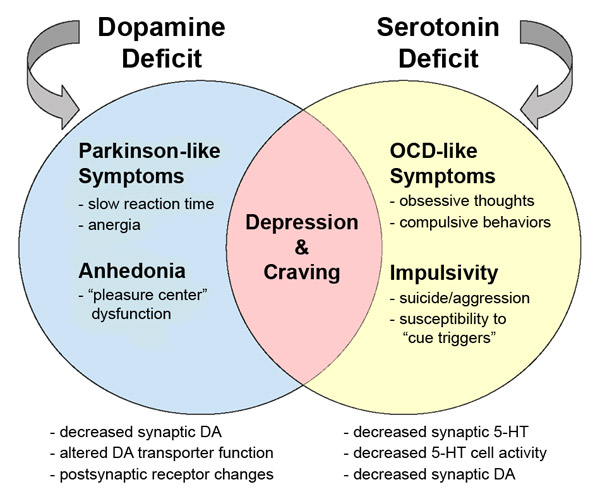
- Fill up on healthy fats like olive oil, nuts, and avocados.
- Eat a well-balanced diet that incorporates lots of lean protein, fruits, vegetables, and whole grains.
- Eat organic nut butters with no added sugar.
- Satisfy your sweet tooth with organic fruits, low-fat yogurts, and fruit smoothies.
- Think outside the box when baking. Discover recipes that rely on whole grains instead of sugars to avoid a sugar crash.
Chocolate cravings are very common, but there are healthy ways to deal with them. Dark chocolate with high percentages of cacao have a number of health benefits, which means you should feel free to enjoy them (in limited quantities of course). Keep in mind that anything with sugar and fat can contribute to weight gain, so practice smart portion control.
What does the body lack if you constantly want chocolate
Article navigation
- What does the body lack in this case?
- Chocolate for men and women
- Source of energy
- Cure for depression
- Is it true that chocolate is a powerful aphrodisiac?
- Features of use
- Which chocolate is healthier?
- How Excess Chocolate Can Hurt
- Royal Forest Coconut Chocolate
More than 70% of the world's population considers chocolate to be their favorite treat.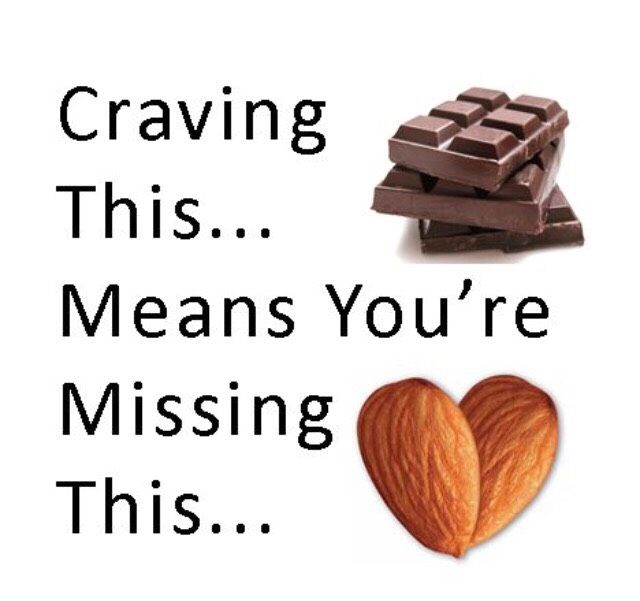 And for good reason - the unique taste of this product consists of 600 shades. The vitamins and minerals contained in chocolate have a powerful effect on a person's physical and psychological health. A sudden desire to eat a couple of cubes of your favorite dessert indicates an acute deficiency of bioactive substances.
And for good reason - the unique taste of this product consists of 600 shades. The vitamins and minerals contained in chocolate have a powerful effect on a person's physical and psychological health. A sudden desire to eat a couple of cubes of your favorite dessert indicates an acute deficiency of bioactive substances.
What does the body lack in this case?
The first reason for strong cravings for chocolate is a lack of magnesium. This trace element is found in large quantities in grated cocoa, which is the basis of all chocolate products. Not getting the right amount of magnesium, a person feels causeless anxiety, constant tension and longing. Sleep worsens, headaches and memory problems occur.
A dark chocolate bar contains half the daily value of magnesium for an adult. Even four squares are enough to relieve stress, feel a surge of efficiency.
Here are three more reasons that cause strong cravings for chocolate:
- Fatigue. Cocoa powder contains caffeine, which boosts energy.
 It is less than in coffee or green tea, but enough to quickly cheer up.
It is less than in coffee or green tea, but enough to quickly cheer up. - Hunger. Chocolate is a high-calorie product that can quickly give a feeling of fullness. An acute desire to eat a chocolate candy or bar occurs in people who are used to snacking on sweets.
- Decreases in blood sugar levels. This condition develops as a result of great physical exertion or hunger. Two cubes of dark chocolate are enough to normalize the level of sugar.
There is also a subjective reason for cravings for chocolate treats - exposure to TV commercials, tempting candy shelves in supermarkets. This is a purely psychological addiction that should not be succumbed to.
Chocolate for men and women
More than 50% of women experience a particular craving for chocolate during their “critical days”. It is assumed that the cause is the stress that the female body undergoes during menstruation. Chocolate speeds up the production of dopamine, a substance that reduces feelings of anxiety and depression.
A high need for chocolate also occurs during menopause. Dark varieties containing more than 70% cocoa liquor help to cope with irritability and bad mood.
Expectant mothers often ask for chocolate without understanding the reasons for this need. A healthy dessert contributes to the normal growth and development of the fetus. But during pregnancy, you can eat only dark chocolate, no more than 30 g per day.
Chocolate is no less useful for men - it maintains the health of the cardiovascular system, especially during hard physical work. A strong craving for the product appears during severe fatigue, depression, high mental stress. Nutritionists recommend that men consume 40 g of dark chocolate daily.
Source of energy
Many people feel a constant desire to eat chocolate when they are very tired, have headaches and sleepiness. This is due to the fact that the product contains caffeine, but in a much smaller volume than in coffee.
Let's compare - a 200 gram serving of coffee contains 100 mg of caffeine. Dark Chocolate Bar - 43mg total. Why drink coffee once again, causing nervousness and insomnia, when you can replace it with a piece of chocolate?
Dark Chocolate Bar - 43mg total. Why drink coffee once again, causing nervousness and insomnia, when you can replace it with a piece of chocolate?
Chocolate, as a natural energy booster, is useful for athletes, especially athletes and cyclists. The substance epicatechin, contained in grated cocoa, accelerates the release of nitric oxide, which is necessary to supply oxygen to the muscles.
The invigorating effect of chocolate lasts for two hours. Therefore, doctors recommend eating chocolate 1-2 hours before sports training and at least 3 hours before going to bed.
Cure for depression
Craving for chocolate often occurs in a state of anxiety, melancholy, unaccountable fear. Dessert has the ability to relieve these symptoms. Scientific studies show that people who regularly consume dark chocolate are 70% less likely to suffer from depression. To improve mood, a small amount of the product is required - only 12 g per day. The cocoa content in the product must be at least 45%.
Four components of chocolate provide antidepressant effects:
- Flavanols. These nutrients protect the brain and improve mood and mental function.
- Caffeine and theobromine. They supply the body with energy, stimulate the brain.
- N-acylethanolamines. These fatty acids cause a slight euphoria effect.
- Phenylethylamine. It accelerates the production of "hormones of joy" - norepinephrine and dopamine.
Scientists consider chocolate not a real remedy for depression, but rather a source of pleasure, helping to get rid of negative emotions.
Is it true that chocolate is a powerful aphrodisiac?
The desire for chocolate is often dictated by the needs of the reproductive system. The product contains chemicals associated with the awakening of libido - tryptophan, which is responsible for arousal, and phenylethylamine, which creates a feeling of falling in love in the brain.
Scientists claim that the amount of these substances in chocolate is not enough to significantly increase sexual activity. The stimulating properties of the product are more psychological than physical. People enjoy the euphoria that chocolate evokes, and the pleasure of its taste is associated with sensual pleasure.
Features of use
For all its benefits, chocolate is a high-calorie product, saturated with fat and sugar. Its amount in the diet should be strictly dosed - 25-30 g per day for women, no more than 40 g for men.
Nutritionists advise eating chocolate after breakfast or afternoon snack. It is convenient for athletes and travelers to have a chocolate snack 1-2 hours before physical activity.
Which chocolate is healthier?
Milk chocolate manufacturers claim their products are healthier because they are rich in milk protein and calcium. Dark chocolate fans object - the more grated cocoa, the higher the content of iron, magnesium and antioxidants.
The comparative composition of useful substances is presented in the table.
| Amount of substance (per 100 g) | Milk chocolate | Dark chocolate |
|---|---|---|
| Protein | 8. | 5.5 |
| Fats | 30.5 | 32.4 |
| Sugar | 54 | 47.5 |
| Iron | 0.9 | 2.13 |
| Potassium | 438 | 502 |
| Cholesterol | 24 | 5 |
The advantage is on the dark chocolate side. An important role is played by its recipe - the first ingredient in the composition should be grated cocoa, the last - sugar. To minimize health risks, buy chocolate based on coconut, cane sugar, or sweeteners.
How excess chocolate can harm
Exceeding the amount of the product can cause serious damage to health. The first threat concerns excess weight, which is easily gained with an excess of chocolate in the diet.
Here are four more harmful consequences of the abuse of chocolate:
- Caries.
The high sugar content in dessert worsens the condition of the teeth.
- Migraine. The tyramine and histamine found in cocoa cause headaches.
- Decreased bone density. It has been proven that an excess of chocolate leads to the development of osteoporosis.
- Acne. Like all fatty foods, cocoa butter increases the production of sebum and provokes the appearance of acne.
Chocolate made from cheap cocoa powder with the addition of trans fats, artificial flavors and flavor enhancers is especially harmful to health.
Royal Forest Coconut Chocolate
Healthy confectionery products are presented in the new line of the Royal Forest online store. These are different types of chocolate made with coconut milk and sugar. The classic chocolate taste is created by a combination of grated cocoa and cocoa butter. They are made from organic cocoa beans grown without the use of chemical fertilizers and GMOs.
The line includes three types of chocolate:
- dark;
- dairy;
- white.
Coconut sugar adds a delicate sweetness and exotic aroma to desserts. It has a low glycemic index, which is important for people with diabetes.
Vegan chocolates are made without animal products, using coconut milk. The original novelty for supporters of proper nutrition is buckwheat chocolate. In its composition, powder from Tatar buckwheat, rich in vitamins and iron, is used.
what is missing in the body?
From time to time the desire to pamper yourself with sweets arises in every person. But it is not always clear why you want chocolate. The answer to this question will help to understand what the body lacks, to find a healthy alternative to a tasty product.
Contents
- Why we are so attracted to chocolate: reasons
- What is missing in the body if you want chocolate
- Why a woman wants chocolate
- How to replace chocolate if you really want it
Why we are so attracted to chocolate: reasons
Sometimes even healthy eaters get the urge to eat a few pieces of chocolate. Physiological and psychological factors can provoke a sudden craving for sweets.
I really want chocolate - reasons:
- Advertising. Beautiful, bright pictures depicting sweet treats skillfully affect the subconscious. Chocolate is always associated with something joyful, tasty, and allows you to feel pleasure.
- Fatigue, nervous, mental strain. With intensive work of the psyche, the body spends a lot of carbohydrates. Chocolate quickly saturates the brain with glucose, replenishes the energy deficit, so at such moments you want sweets.
- Cocoa beans contain alkaloids that affect the production of serotonin, the hormone of happiness.
- On a subconscious level, chocolate is associated with the period of childhood, when there were no worries and stresses. Children are often rewarded with sweets for success, good grades and behavior. In adulthood, a person wants to eat a piece of chocolate in difficult life moments to compensate for the lack of positive impressions and emotions.
- Cocoa beans contain tyramine and phenylethylamine - the action of these substances is similar to amphetamines. Their number is minimal, but with regular use, addiction occurs. This explains why you constantly and strongly want chocolate.
- Food addiction, genetic predisposition to sweets is inherited.
- Some doctors believe that you really want sweets when infected with parasites. There is no exact confirmation of this theory, but there are no scientific rebuttals either.
Important! Chocolate quickly eliminates fatigue, improves mood, due to the presence of caffeine and theobromine in the composition. But the effect disappears after a few hours. Therefore, excessive passion for sweets often turns into addiction.
What is missing in the body if you want chocolate
If you want a lot of chocolate, what is missing? Cocoa is a source of magnesium and iron. 100 g of dark chocolate contains 40% of the daily requirement of magnesium, and 33% of iron.
Symptoms of magnesium and iron deficiency:
- sleep disturbance, insomnia;
- anxiety, apathy, depression, unstable psycho-emotional state;
- decreased performance, memory impairment;
- convulsions, muscle twitching, spasms of internal organs;
- migraine, pain in the back of the neck;
- frequent bouts of nausea;
- shortness of breath, arrhythmia;
- pale skin, deterioration of hair, nails.
What to do if you want chocolate? Delicacy helps to quickly cope with unpleasant sensations, prevents their occurrence. If there is a desire, you do not need to completely abandon your favorite product. But you need to use it wisely - eat 1-2 pieces 2-3 times a week, and better in the morning.
Why a woman wants chocolate
Women often really want chocolate. This is due to the peculiarities of the hormonal and nervous system.
Cravings for chocolate usually increase against the background of hormonal surges - before menstruation or during critical days, during menopause, pregnancy.
The desire to eat chocolate during PMS is due to several factors. In the second phase of the cycle, estrogen levels decrease, and sweets help make up for the deficiency. After ovulation, the brain receives a signal that it is necessary to stock up on useful substances, due to possible fertilization, there is a need for high-calorie food.
Usually a few pieces are enough to eliminate the need. But if you want to eat chocolate all the time, you need to consult a doctor, do tests to understand what caused such an addiction.
I really want chocolate during pregnancy - reasons:
- in pregnant and lactating women, the need for magnesium and iron increases by 20-30%;
- the hormonal background is constantly changing;
- the process of bearing a child is often accompanied by anxiety, stress, feelings;
- chronic fatigue even with minor physical exertion, the body requires emergency replenishment of energy.
Important! Chocolate should not be abused by people with hypertension, heart disease, acne.
Sugar in large quantities accelerates the aging process.
How to replace chocolate if you really want it
Chocolate helps to cope with fatigue and bad mood, to make up for the deficiency of some essential substances in the body. The product has a beneficial effect on the functioning of the heart and blood vessels, the nervous system, and reduces the level of bad cholesterol. But most chocolates, in addition to cocoa butter, often contain a lot of sugar and other not very useful additives.
You always want chocolate - what to replace it with:
- Nuts. Most magnesium is found in cashews, but other types of nuts will help fill the deficiency of this trace element.
- Sunflower, pumpkin, sesame seeds. It is best to eat them raw.
- Cereals. Millet, oatmeal, barley.
- Legumes.
- Avocado.
- Fatty fish, seaweed.
- Carob. The sweet powder is obtained from the dried pulp of rosewood and is somewhat lighter in color than cocoa.
It does not contain theobromine, caffeine, but many vitamins and minerals. It improves the functioning of the digestive system.
- Hematogen. Sweet tile contains a lot of proteins and iron, improves eyesight and skin condition, strengthens hair and nails.
- Sweet natural juices, tea with homemade jam.
- Fructose chocolate. The product contains cocoa, but no sugar and milk, which allows you not to gain weight even with excessive love for sweets.
Fruits - grapes, bananas, peaches, pears, melons, or any dried fruits - will help to kill the need for sweets. You can prepare a salad, season it with honey, natural yogurt.
Helps to satisfy the need for sweet marshmallows and marmalade based on pectin or agar-agar. There are no fats in these products, there are very few proteins. They improve the functioning of the immune system, normalize metabolic processes.
If you are constantly craving chocolate, you should smell vanilla. The spice has a sugary aroma, from which it soon begins to feel sick, the craving for sweets decreases.









